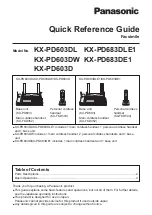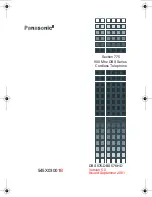
4
• Please note the warning symbols. They mark all those
instructions which are important for safety reasons.
Observe these instructions as failure to do so could result
in serious injury!
• The pruning saw must be used only by one person at a
time. Make sure bystanders do not stay in the vicinity of
the pruning saw’s work area.
• Check the safe operating condition of the pruning saw, in
particular the guide bar and the saw chain, before each
operation.
• Always have a safe stand when working with the saw.
• Hold the machine firmly and securely when switching on.
• Make sure the guide bar and the saw chain must be free
when switched on and must not come into contact with
the workpiece to be cut.
• Keep your hands away from the sawing area. Do not reach
under the workpiece. Contact with the saw chain may
result in injury.
• Guide the pruning saw onto the workpiece only when
switched on. Otherwise there is a risk of kick-back if the
saw chain gets caught in the workpiece.
• When sawing, the base plate must always face against the
workpiece. The saw chain can become jammed and lead
to loss of control over the machine.
• When the cut is completed, switch off the machine and
then pull the saw chain out of the cut only after it has
come to a standstill. This way you can avoid kick-back.
• Clamp the material to be processed well. Do not support
the workpiece with your hand or foot. Do not touch
objects or the floor with the saw running. Danger of kick-
back.
• When sawing converted timber and thin branches always
use a strong support, such as a sawing trestle. Do not
stack timber pieces.
• Before cutting logs, secure the logs in position.
• When working on sloping ground, make sure to work
facing upwards.
• Be particularly careful when cutting splintered wood.
Splinters of wood can be torn along by the saw chain and
increase the risk of injury!
• Foreign objects such as nails, screws, metal parts, sand,
etc. lead to increased wear on the guide bar and saw
chain.
• A blunt saw chain can cause overheating and damage to
the motor.
• Always remove the battery when checking the chain
tension, to re-tighten it, to mount the saw chain and to
eliminate faults! Also remove the battery if you do not use
the machine temporarily.
Battery & Charger
Safety Instructions
We pay a great deal of attention to the design of every battery
pack to ensure that we supply you with batteries that are safe,
durable and have a high energy density. The battery cells have
a wide range of safety devices. Each individual cell is initially
formatted and its electrical characteristic curves are recorded.
This data is then used exclusively to be able to assemble the
best possible battery packs.
Despite all the safety precautions, caution must always be
exercised when handling batteries. The following points must
be obeyed at all times to ensure safe use. Safe use can only
be guaranteed if undamaged cells are used. Incorrect handling
of the battery pack can cause cell damage.
IMPORTANT!
Analyses confirm that incorrect use and poor
care of high-performance batteries are the main factors
responsible for personal and/or product damage.
m
WARNING!
Use only approved replacement batteries;
other batteries may damage the cordless pruning saw and
cause it to malfunction, which can lead to serious personal
injury.
m
WARNING!
Do not use a battery pack or appliance that
is damaged or modified. Damaged or modified batteries may
exhibit unpredictable behavior resulting in fire, explosion or
risk of injury.
Do not modify or attempt to repair the appliance or the battery
pack except as indicated in the instructions for use and care.
Have your battery pack serviced by a qualified repair person
using only identical replacement parts. This will ensure that the
safety of the battery pack is maintained.
m
CAUTION!
To reduce the risk of injury, charge the 24V
iON+ lithium-ion battery pack only in its designated 24V iON+
lithium-ion charger. Other types of chargers present risk of fire,
personal injury and damage. Do not wire a battery pack to a
power supply plug or car cigarette lighter. Such misuse will
permanently disable or damage the battery pack.
•
Avoid dangerous environments – Do not charge the
battery pack in rain, snow or in damp or wet locations.
Do not use the battery pack or charger in the presence of
explosive atmospheres (gaseous fumes, dust or flammable
materials) because sparks may be generated when inserting
or removing the battery pack, which could lead to a fire.
• Charge in a well-ventilated area –
Do not block the
charger vents. Keep them clear to allow for proper
ventilation. Do not allow smoking or open flames near a
charging battery pack. Vented gases may explode.
NOTE: The safe temperature range for the battery is 41°F –
105ºF (5°C – 40.5°C). Do not charge the battery outside in
freezing weather; charge it at room temperature.





































